2–5 June, 2025
Pioneering
the Future of Tech & Gaming
Contents
It gives me great pleasure to present this report on the SiGMA AIBC ASIA 2025 conference – an essential snapshot of the rapidly evolving landscape we operate in. At SiGMA, we’ve always championed innovation, collaboration, and the bold spirit of pioneers who continue to shape the future of gaming and emerging verticals. This report reflects the pulse of the industry, capturing its challenges, opportunities, and the immense potential ahead.
Since founding SiGMA, my vision has always been to connect key players across continents and provide a platform where ideas can grow. This report is a testament to that mission – bringing together sharp insights, data-driven analysis, and strategic foresight to guide stakeholders through an increasingly complex ecosystem.
Whether you’re an operator, investor, policymaker, or innovator, I encourage you to dive deep into the findings and let them inform your next move. As we look ahead, let’s continue pushing boundaries, embracing change, and building bridges that span industries and geographies.
Founder, SiGMA Group GP, Ikigai Ventures

I. KEY INSIGHTS
Welcome to the SiGMA AIBC “Horizons” series, which distills the emerging insights on tech and gaming that can only be gleaned from cutting-edge conferences. From AI to regulation, to governance, to ESG, this explores vital challenges facing the digital assets and gaming ecosystem, based on the carefully curated panel conversations at SiGMA AIBC events. Each “Horizons” report has a flavour of the region where the event is held.
This issue is based on the SiGMA AIBC Asia event which took place from 2-5 June 2025. The event covered emerging trends in gaming, crypto, AI, blockchain, regulatory frameworks, digital marketing, and sustainable investments—all set in the vibrant economies of Asia. SiGMA Asia 2025 revealed a region defined by regulatory innovation, technological acceleration, and deep cultural diversity. It is clear that success in Asia demands more than technology; it requires localisation, inclusion, and a commitment to meaningful engagement. Those who build for both emotional resonance and technical precision will shape not just the future of gaming, but the digital society itself. Key insights are summarised below.
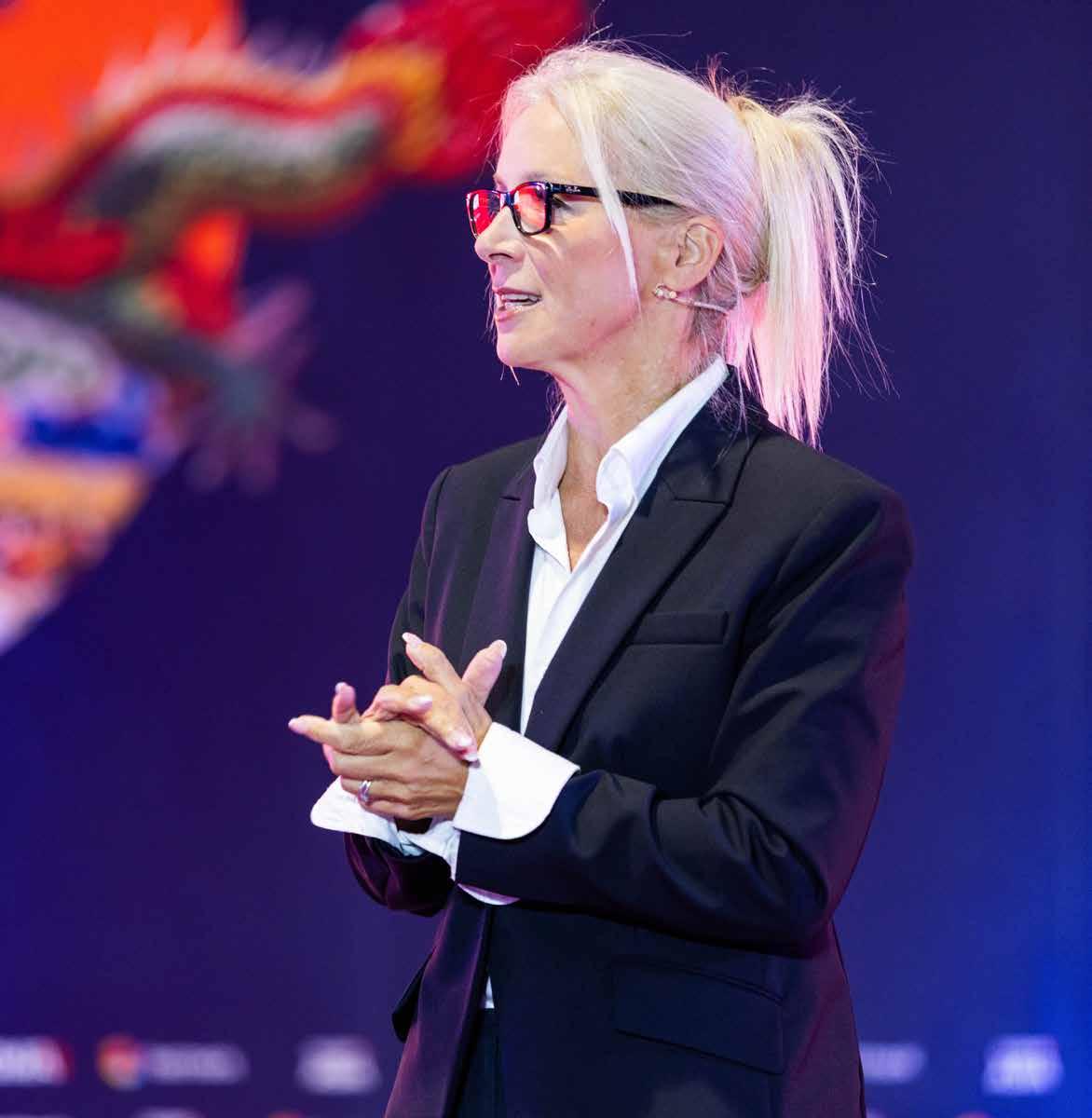
1. Southeast Asia: Fragmented but
Fertile
Asia is not a monolith. The summit emphasised the region’s complexity, ranging from legal frameworks and tech readiness to cultural expectations and infrastructure disparities. Southeast Asia, particularly, stood out for its mobile-first, crypto-curious populations and agile digital infrastructure. Yet the landscape requires deep localisation and adaptability, as geopolitical shifts and regulatory uncertainty continue to reshape go-to-market strategies.
The Philippines emerged as the benchmark for adaptive regulation and inclusive innovation. With its Crypto Asset Service Provider (CASP) framework, tax incentives, and a pivot from offshore POGOs to domestic-led platforms, the country achieved 165% growth in 2024. Payment systems like GCash, combined with a culturally attuned and agile workforce, have supported iGaming’s mainstream adoption. Thailand, though still in regulatory limbo, is expected to unlock substantial growth within the next year. Sri Lanka was flagged for its affordability and geographic advantage, while Japan’s earlier momentum has slowed due to regulatory ambiguity and cultural pushback against gambling-related initiatives.
2. Asia Leads the Global Video Gaming and Esports Ecosystem
Asia has firmly established itself as the epicentre of the global gaming industry, accounting for 62 of the top 100 gaming companies and a player base of 3.5 billion. With a market nearing $400 billion, the region is not only the largest in size but also the most dynamic in innovation and policy adoption. The Philippines’ official recognition of gaming as a national growth sector reflects the strategic importance of this industry in driving economic development. The future of gaming in Asia is clearly mobile-first, with 50% of gameplay happening on mobile devices, unlocking mass market access in underconnected populations across Southeast Asia, Africa, and Latin America.
Esports in Asia has surpassed entertainment—it’s now a societal force. With over 600 million players and viewers, the region commands the largest esports audience in the world. Streaming platforms have become the new stadiums, especially for a generation where 79% of those under 22 are already mobile gamers. Asia’s youth-driven mobile penetration is transforming gaming into a lifestyle and cultural cornerstone.
3. Technology as the Core Growth Driver
AI dominated technology discussions, with applications in segmentation, churn prediction, game personalisation, and compliance. Edge computing and federated learning were highlighted for enabling privacy-respecting real-time engagement. Gamification was also affirmed as a key retention strategy—no longer a gimmick but a tool for behavioural design rooted in data and localised storytelling. Meanwhile, crash games and social formats resonated with Gen Z’s appetite for simple, interactive, community-based play.
AI and the Future of Engagement
Artificial intelligence was a consistent thread across the summit, moving from hype to functional infrastructure. AI is reshaping the gaming experience—powering fraud detection, hyper-personalised engagement, and lifelike non-player characters (NPCs). AI’s integration into everything from esports coaching to predictive analytics marks a shift toward real-time, emotionally adaptive gameplay. Brain-computer interfaces are also emerging as the next frontier, enabling players to interact with digital environments using only their thoughts and setting the stage for entirely new categories of immersive experience.
Attention marketing is now replacing traditional labour in digital economies. Games and platforms are monetising attention through AI-enhanced experiences, player-driven content creation, and community-led curation. The convergence of AI, Web3, and immersive technologies is birthing a new kind of economy—one where value is generated not by time worked, but by engagement, creativity, and network participation.
Web3 and Digital Economies Transforming Gaming
Asia is driving the evolution of Web3 gaming, with 83% of all blockchain-based games developed in the region. The focus has shifted from simple monetisation to deeper innovations around digital property rights, play-to-own models, and DAOled governance. Web3 games are now evolving into full-fledged digital societies—network states with their own economies, tokens, and participatory governance. This transformation signals the dawn of an intangible industrial revolution, with Asia leading the shift toward value creation through virtual assets and economies of attention.
While fully on-chain games remain a challenge, hybrid models offering optional ownership are gaining traction. Web3 adoption is shifting toward seamless experiences where the underlying tech is invisible. Telegram Mini Apps and walletlinked advertising are enabling virality and utility within single ecosystems, pointing to a future where crypto, commerce, and content converge effortlessly.
4. Gaming as a Catalyst for Social and Human Development
Beyond economics, gaming is being repurposed for social good. From PTSD therapy and elderly wellness gamification to anonymous mental health support, Asia is demonstrating how gaming can contribute to public health. Japan, in particular, is leading the way in inclusive design, creating accessible experiences for seniors and people with disabilities. Gaming is increasingly seen not just as a cultural or commercial product, but as infrastructure for human flourishing in ageing and digitally transitioning societies.
Redefining Skills, Identity, and Education
Gaming is also becoming a powerful medium for skill signalling and identity formation. Platforms like Roblox are generating real-time behavioural data, offering insights into creativity, collaboration, and leadership that may soon replace traditional résumés. For Gen Z and Gen Alpha, games are where identity, finance, learning, and community intersect. Education is being reimagined, with the metaverse emerging as the new campus. Future education will unfold not in traditional institutions but in immersive, gamified environments focused on blockchain, AI, and brain-computer interface (BCI) literacy.
5. Inclusion, Reskilling, and Women’s Leadership
Workforce transformation was another key theme. Women are not only present but increasingly central to the evolution of the gaming and tech sectors. From the Philippines to India, female leaders are driving growth in design, policy, and marketing. Yet the need for structural support remains clear—mentorship, inclusive hiring practices, and flexible work environments are essential to ensure that inclusion is not just performative but transformative.
6. Social Impact and Emotional Engagement
Corporate social responsibility took on a more human dimension at the summit. The SiGMA Foundation showcased how digital leadership, philanthropy, and adventure-based engagement are redefining impact. Emotional resonance— whether in gameplay, branding, or employee experience—was identified as a core metric of modern success. Purpose, not just profit, is increasingly driving strategy in tech and gaming.
7. Sector Trends: From Casinos to Campaigns
In the gaming and iGaming sectors, operators are moving from product-centric to player-centric strategies. Success now hinges on cultural localisation, mobile integration, and compatibility with regional payment systems. Innovations like Slot Machines 2.0 are blending physical and digital play with shared wallets and real-time analytics. Smart casinos are using AI for service personalisation and facial recognition, while online platforms dominate in speed, convenience, and user acquisition through influencer ecosystems.
The affiliate and marketing landscape is being reshaped by transparency and technology. Influencer campaigns are evolving from mass reach to mission alignment. Trust is overtaking virality as the metric of success. AI, blockchain, and dynamic attribution models are allowing brands to measure true value across hybrid customer journeys. Campaigns are becoming more data-driven, more ethical, and more personal.
II. SiGMA ASIA STAGE INSIGHTS
The SiGMA Stage at SiGMA Asia 2025 opened with high-level energy, international diplomacy, and strategic foresight, setting the tone for a content-rich conference focused on innovation, inclusion, and integrity in the gaming sector. His Excellency, John Busuttil, Malta’s Ambassador to China and the Philippines, delivered a warm welcome, symbolizing Malta’s continued commitment to global gaming collaboration. The spotlight quickly shifted to a high-level panel unraveling Asia’s nuanced regulatory evolution, making it clear that the region’s gaming growth is not delayed but distinct—deeply rooted in local culture, policy, and innovation. From the Philippines’ remarkable iGaming reforms to emerging regulatory landscapes in Thailand, Timor-Leste, and Sri Lanka, early sessions revealed a continent reshaping the global gaming map on its own terms. The opening day set a powerful precedent: Asia’s gaming industry is awakening with purpose, driven by cultural fluency, digital resilience, and a commitment to smarter, safer, and more inclusive growth.

1. From Banks to Bets: Inside
the Mind of a Hacker
Cybersecurity expert Phuong Nguyen warned that online gaming platforms now face greater cyber risks than banks, with most operators spending under 3% of revenue on security compared to banks’ 10–15%. Drawing from 16 years of experience in Southeast Asia, Nguyen exposed the sector’s vulnerabilities—from social engineering to poorly protected endpoints and VIP data breaches. He underscored the lack of staff training and security protocols, calling for bank-grade defenses like penetration testing, encryption, and compliance with standards like GDPR and PCI DSS. His keynote was a rallying cry for the gaming industry to adopt robust digital defenses before the next wave of cyber threats hits.
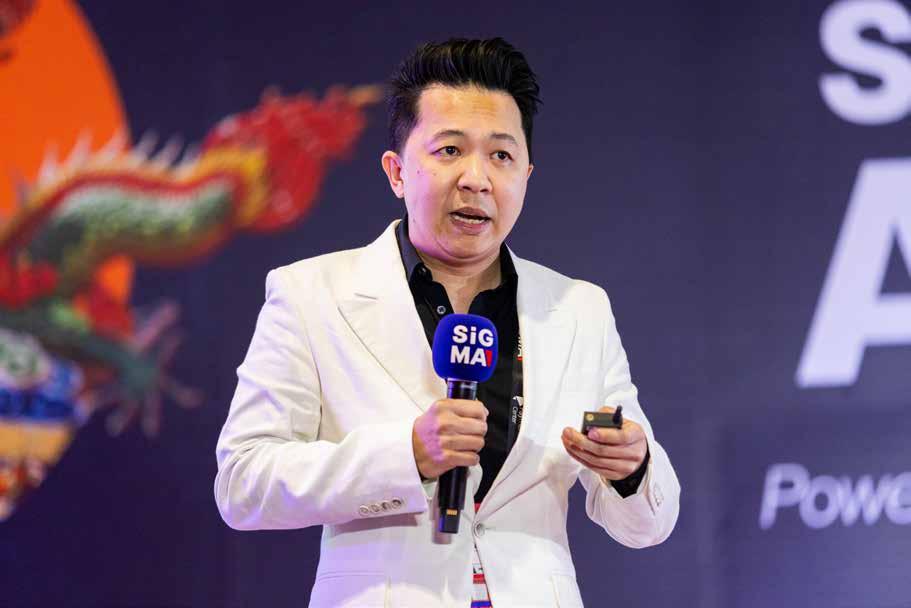
2. Asia: The Sleeping Giant of Gaming
This panel reframed Asia not as a latecomer but as a uniquely evolving powerhouse, shaped by cultural, regulatory, and market-specific complexities. Rather than mirroring Western models, markets like the Philippines, Thailand, and Sri Lanka are forging their own paths, with new regulatory regimes emerging and localized behavior dictating user loyalty. Payment infrastructure remains a pain point, while fluid player loyalty demands culturally tailored retention strategies. The consensus: success in Asia requires long-term commitment, cultural fluency, and strategic partnerships—not shortcuts.
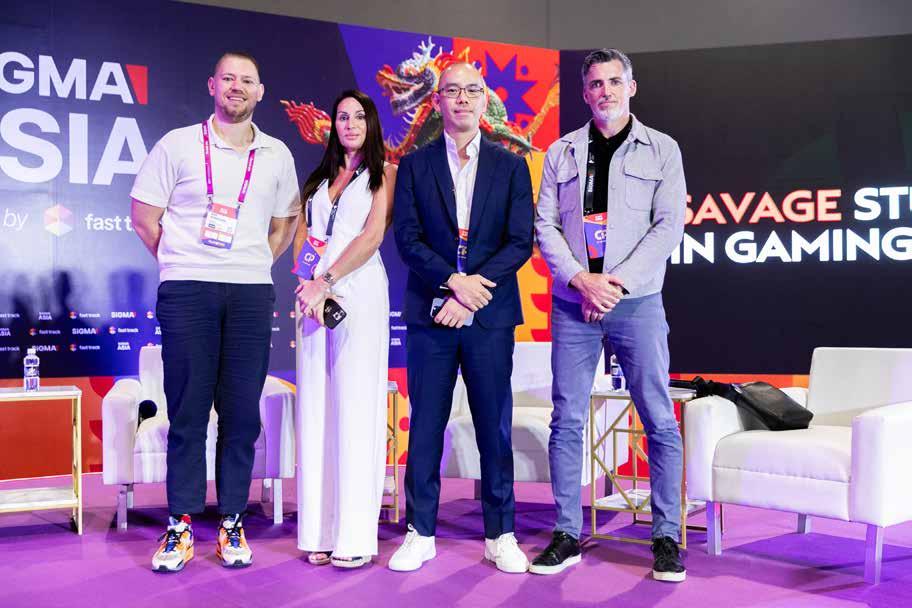
3. Philippines iGaming Boom
The Philippines has become a model for regulatory reinvention and growth, achieving 165% revenue growth in 2024 through tax reforms, mobile integration, and a crackdown on illegal operators. Formerly POGO-dependent, the market has shifted toward domestic mobile-first growth. New licensing frameworks, crypto-friendly policies, and a talent absorption strategy through SBP accreditation are fostering a more compliant and competitive environment. Trust, localization, and adaptability have replaced bonus wars as the industry’s growth drivers, positioning the Philippines as Southeast Asia’s most mature iGaming market.

4. Market Moves & Trade Tensions
This session examined how shifting geopolitics and regulatory reforms are redrawing Asia’s gaming map. The Philippines remains a regional hub thanks to its innovation-friendly, regulation-forward approach, but faces challenges in tech talent and bureaucracy. Countries like Thailand and Vietnam are rapidly catching up, while investor-friendly incentives, digital infrastructure, and strategic partnerships remain vital. Speakers emphasized the need to balance regulation with user experience, invest in education, and leverage satellite connectivity for regional resilience. The Philippines’ future success depends on adapting to global pressures while continuing to lead with agility.
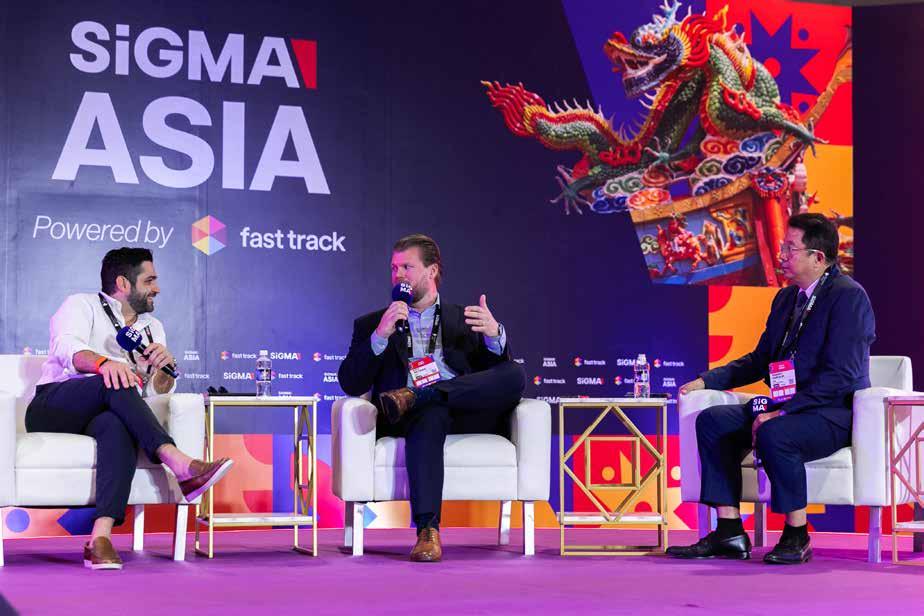
5. Beyond the Game: SiGMA Foundation’s Impact
Keith Marshall’s powerful presentation highlighted the SiGMA Foundation’s evolution from expedition-based fundraising to a global catalyst for community transformation. Through treks across Peru, Morocco, and Spain, the Foundation raises funds while rebuilding confidence and purpose. From hospitals to schools, their work spans continents—and is rooted in authentic, hands-on engagement. Corporate support has grown, spurred by visible impact and credibility. Marshall called for genuine CSR, challenging companies to embed giving into their DNA, not as PR but as purpose. His core message: rebuild lives, not just infrastructure—and restore meaning in a world that’s forgotten how to care.

6. Affiliate Marketing Mastery –Strategies for Success
Affiliate marketing in iGaming has evolved into a strategic discipline balancing performance, trust, and localization. Acquisition models differ between B2B and B2C businesses, with consumer platforms emphasizing scale and speed while business services rely on partnership-driven engagement. Top-performing platforms use gamified onboarding and regionspecific funnel design to enhance conversion and retention. Trust-building through transparent attribution, minimal-contract relationships, and real-time communication is critical— especially across diverse regulatory environments. Social media and influencer strategies continue to shape acquisition, but require oversight and deep regional adaptation. Localization beyond translation—understanding user behavior and preferred payment methods—is essential in emerging markets. Ultimately, sustainable affiliate success hinges on performance metrics, ethical operation, and long-term partnerships.
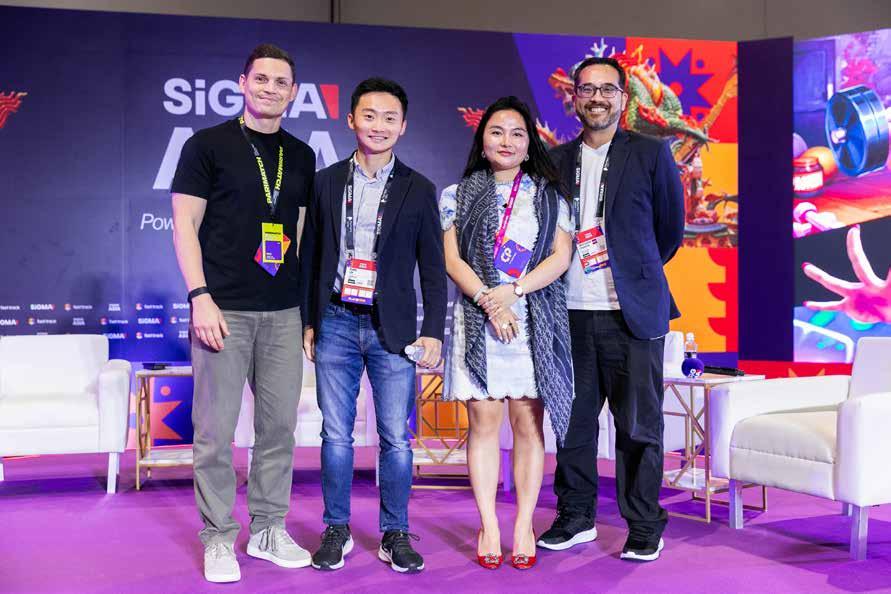
7. Telegram Mini Apps: A New Source of Traffic and Revenue
Telegram Mini Apps (TMAs) are revolutionizing user acquisition by offering seamless, HTML5-based gaming and fintech experiences directly within Telegram’s messaging environment. These lightweight apps require no download or login, enabling immediate engagement across mobile and desktop. TMAs are giving rise to a new Web3 gaming ecosystem, with play-to-earn models and viral distribution channels powered by Telegram’s infrastructure. Wallet-linked insights allow hyper-targeted advertising and efficient CPA/CPE strategies. Native Telegram tools like bots and push notifications enhance user retention and community-building. Already gaining traction in Asia and Africa—especially Indonesia—TMAs offer a low-barrier gateway to Web3 growth and user monetization, making them an essential tool for emerging market engagement.

8. Beyond the Hype: How Top-Tier Influencers Drive Real Impact
Trent Lyle’s keynote debunked common myths about influencer marketing, emphasizing conversion, retention, and alignment over follower counts or viral appeal. Mid-tier influencers with niche audiences often outperform celebrity endorsements due to higher engagement and better audience fit. Success metrics now center on performance, with datadriven strategies guiding campaign design. The trend is shifting toward long-term partnerships and revenue-sharing models that incentivize creators and foster loyalty. Cocreated content and integrated storytelling replace scripted ads, allowing influencers to connect authentically with audiences. The most effective influencer strategies balance creativity, accountability, and strategic alignment—making them indispensable for brands aiming to build trust and drive tangible outcomes in the iGaming space.

9. The Philippines Playbook: A Strategic Guide
for Operators & Suppliers
Marie-Antoinette Keong outlined why the Philippines has become the strategic gateway to Asia’s gaming market. As the region’s only fully regulated online gaming jurisdiction, it offers structured B2B and B2C licensing, continuous audits, and transparent enforcement under PAGCOR. The country has shifted away from offshore gaming through Executive Order 74, focusing instead on domestic oversight and compliance. New regulations in 2024 mandate that international suppliers—from game developers to affiliates—secure local accreditation. With digital GGR surpassing land-based revenue for the first time, early movers are poised to benefit. Future regulation will focus on sustainability and ethical governance. The Philippines is now a mature, regulation-savvy hub—and entering the market is no longer optional, but strategic.
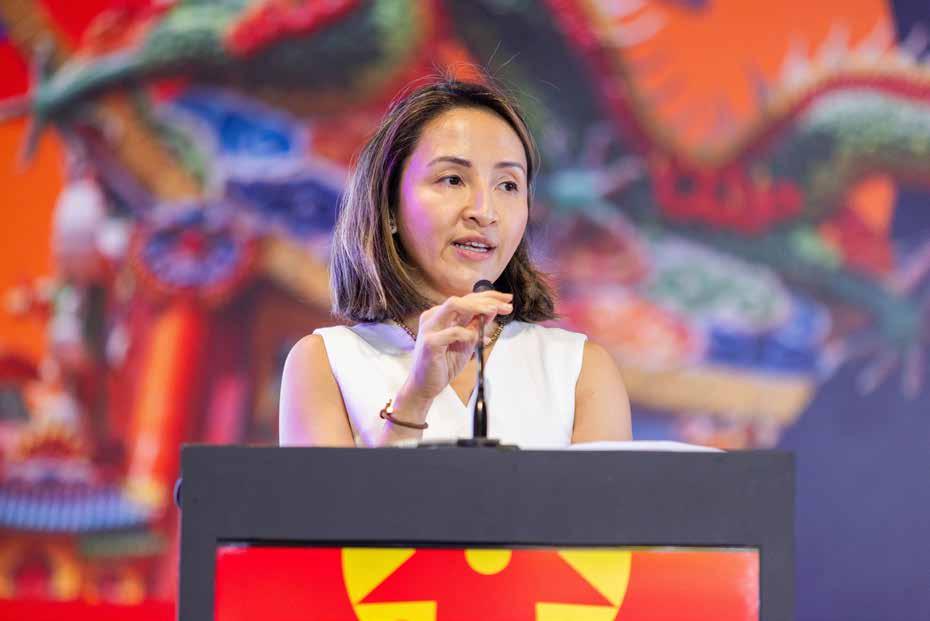
10. The Philippines Playbook: A Strategic Guide
for Operators & Suppliers
Marie-Antoinette Keong positioned the Philippines as the strategic gateway for global operators entering Asia. As the region’s only fully regulated online gaming jurisdiction, it offers a mature, transparent framework with both B2C and B2B accreditation under PAGCOR. The country’s shift from offshore licensing (via Executive Order 74) to domestic oversight has restored regulatory confidence. Expanded 2024 accreditation now requires global suppliers—from content developers to payment vendors—to be locally registered. With digital GGR surpassing land-based revenue, early movers gain first-to-market advantages. Looking forward, the Philippines aims to lead Asia in ethical, sustainable regulation—setting a benchmark others may follow.

11. Slot Machines 2.0: Revamping the Casino Floor Experience
This panel explored the transformation of slot machines and casino floors across Asia. While game mechanics remain stable, the evolution lies in payment innovation (e-wallets), seamless onlineoffline integration, and AI-powered personalisation. Regulatory bodies in jurisdictions like Macau and the Philippines are pushing for technical upgrades and standardisation. Operators are adopting CMS, smart tables, and facial recognition to enhance player tracking and rewards. Convergence between land-based and iGaming platforms is accelerating, offering unified wallets and consistent UX. The future casino floor will be immersive and techenabled, focused on data, personalisation, and Gen Z appeal.
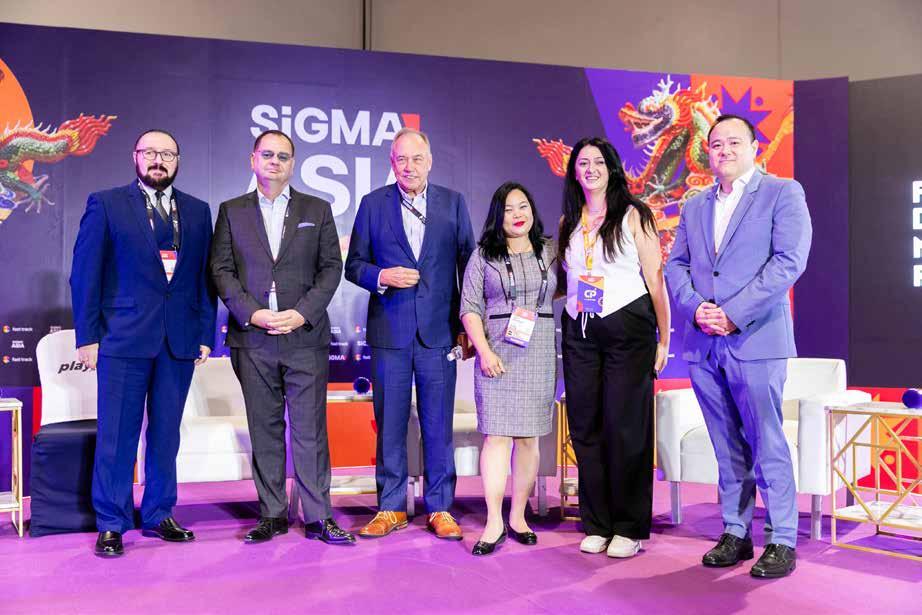
12. The Smart Casino: Online and Offline Best Practices to Attract, Engage
and Retain
Players
Niall Murray’s keynote delivered a hybrid playbook for player engagement. He stressed that the future of casinos lies in blending the sensory richness of land-based gaming with the convenience of online platforms. Integrated loyalty systems, seamless KYC, multilingual support, and AI-powered personalisation define best practice. In physical venues, RFID tables and facial recognition boost service and targeting. The VIP model is evolving toward premium mass, with lifestyle benefits and digitally enhanced experiences driving retention. Acquisition strategies differ by channel, but responsiveness and localisation remain key. Murray’s central message: integration, not separation, is the new casino strategy.

13. Where is the next ‘Las Vegas of Asia’?
This panel assessed Asia’s future gaming hubs, with the Philippines emerging as the short-term leader due to its established regulatory infrastructure and government support. Thailand holds high potential but faces legislative delays, while Sri Lanka is quietly advancing with affordable labor and Port City development. Japan, once a frontrunner, is stalled by slow progress. Long-term speculation includes Ras Al Khaimah and Saudi Arabia. Panellists agreed Asia’s growth will be regional, not centralized like Las Vegas. The Philippines, however, remains the safest bet for nearterm investment and expansion.
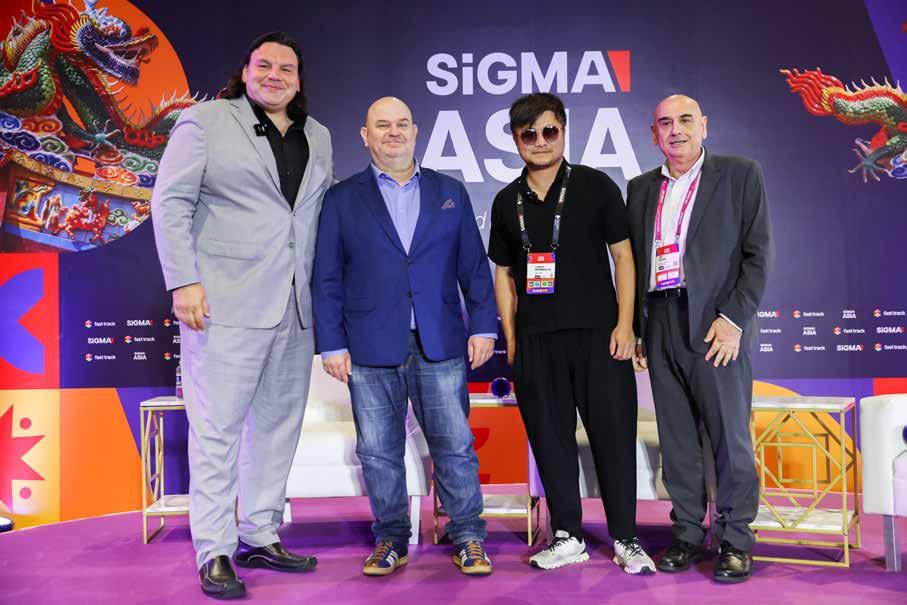
14. Why Do Gamification Strategies Fail?
This panel dissected common pitfalls in gamification strategies. Failures often stem from poor integration with CRM and user flows, lack of cultural relevance, or misaligned incentives. Effective gamification is data-driven, market-specific, and emotionally engaging. Overuse can cause “badge fatigue,” while free-toplay models without monetisation often yield vanity metrics. The panel emphasized that gamification excels in retention, especially when personalisation and social mechanics are well designed. Strategic success relies on thoughtful progression, localisation, and embedding gamification into the entire player journey—not as an afterthought, but as an engagement core.
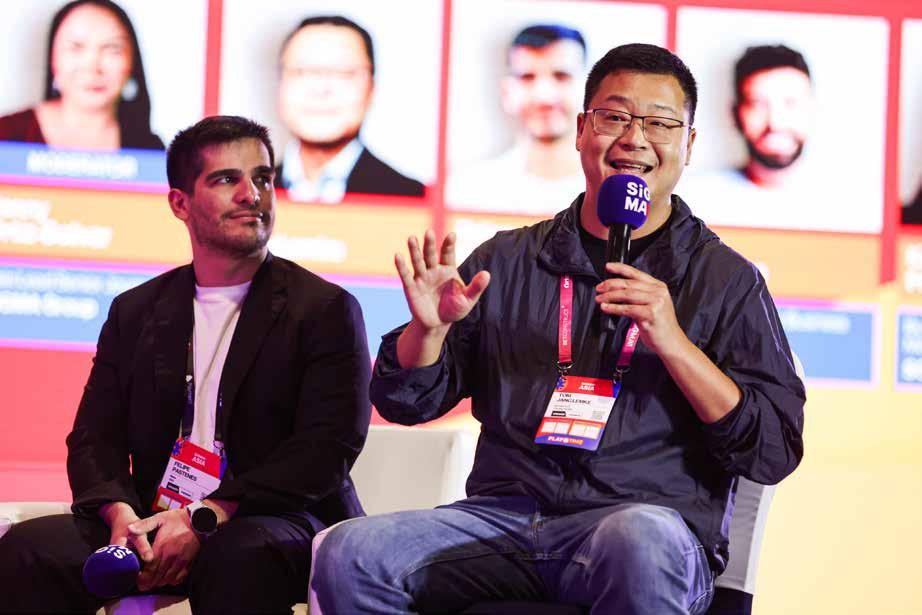
15. Crash Course: Building Crash Games
Miranda and Igor unpacked the rise of crash games, emphasizing their appeal to Gen Z and mobile-first users. Crash games offer active gameplay with simple mechanics and strong social features like real-time chat. They’re growing fastest in Latin America, Africa, and Asia, where mobile adoption and sports fandom fuel expansion. Operators prize their easy onboarding, branding flexibility, and strong retention. The format is evolving into a standalone vertical, with future versions expected to include hybrid mechanics and influencer-friendly experiences. Crash games are more than a trend—they’re a strategic asset in emerging iGaming markets.
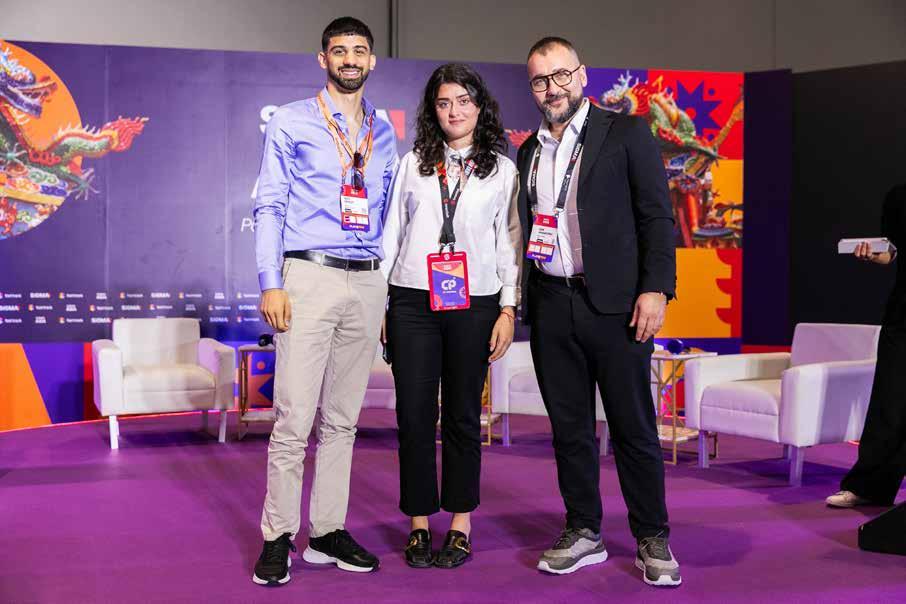
16. From UX to Load Times, Devices to Payments: A Deep Dive
into Localised Player Journeys
Carl Wiltshire’s keynote dissected the critical elements shaping UX in Asia. Infrastructure challenges in countries like the Philippines mean slow load times and widespread use of entry-level Android devices. E-wallets like GCash dominate payments. The top-performing platforms prioritise fast onboarding, seamless KYC, and culturally relevant UI/UX. Wiltshire warned against treating Asia-Pacific as a monolith— localisation must extend beyond language to tone, interface, and payment flow. Deep personalisation, responsive mobile design, and clear user journeys were cited as essential to winning loyalty in mobile-first, infrastructure-fragmented markets like Southeast Asia.
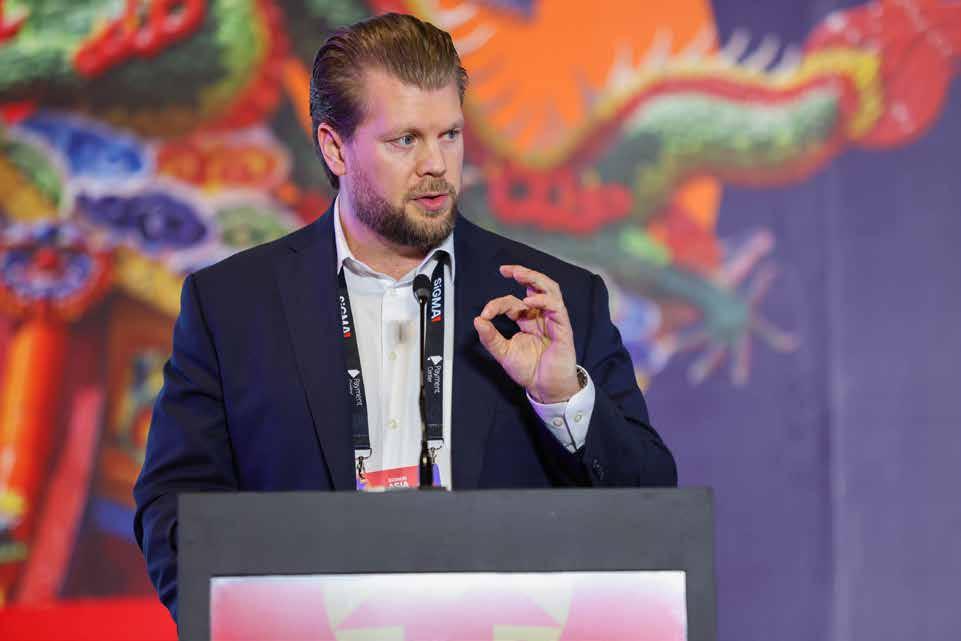
17. Gaming as a Spectator Sport: The Rise of Social Gaming in SE Asia
Meanwhile Sean McAnally’s keynote shed light on Southeast Asia’s booming social gaming scene, where entertainmentdriven formats like social casino gaming and peer-to-peer betting are unlocking new, regulation-free revenue models. Unlike gambling, these platforms offer no real-money cashouts and instead generate revenue through virtual currency purchases. With market projections exceeding $1 billion by 2027, low barriers to entry, and deep mobile-first adoption, social gaming has emerged as a strategic engagement tool for both land-based and online casinos. Its gamified design, global reach, and regulatory freedom make it a high-margin, scalable opportunity not just for user acquisition but for reactivating dormant audiences. It is no longer a trend—it’s a necessity for forward-looking gaming strategies in Asia.

18. Why the Metaverse Failed and What Comes Next?
Ariel Ho-Kaya explored why the early hype around the metaverse collapsed and what might succeed it. She argued that the core concept already exists on the internet, and that adding a 3D layer was not enough. Hardware and digital literacy remain barriers to mainstream adoption, while the gaming sector already delivers metaverse-like experiences successfully. Ariel proposed a new metaverse framework built on three pillars: true gamification (using behavioral design and motivation systems), network effects (social momentum), and ownership (enabled by Web3). She emphasized that 3D worlds must be underpinned by strong engagement design and cited examples like Yuga Labs’ OtherSide to demonstrate success through community and utility. The future of immersive digital spaces lies in well-designed games rooted in behavioral science and economic incentives, not just flashy interfaces.

19. Beyond Defence: Leveraging Fraud Prevention as a Competitive Edge
This session redefined fraud prevention as a growth enabler rather than a compliance burden. Unified fraud and AML systems provide full visibility across the user journey, enhancing risk detection and compliance. Real-time data and AI tools are enabling adaptive profiling, particularly for VIPs who require white-glove, low-friction service. Explainable AI is crucial as regulators demand transparency. Segmented controls and preKYC prevention tactics improve UX and reduce abandonment. AI is also enabling retention through personalized offers while monitoring risky behavior patterns. The panel reinforced that AI must work hand-in-hand with human judgment and ethical standards. Fraud prevention, when integrated strategically, supports trust, safety, and long-term user loyalty.

20. AI’s High-Stakes Makeover: Utilizing
AI for Personalized Player Engagement
AI is revolutionizing player engagement in iGaming by enabling hyper-personalization, fraud mitigation, and intelligent retention strategies. This panel explored how AI transitions from cohortbased segmentation to real-time, device-level profiling. Edge AI ensures privacy by processing data on-device, while federated learning supports scalable, secure intelligence. Clean, consistent data is vital for training effective models. Ethical considerations, such as over-personalization and user vulnerability, require behavioral scientists’ input. AI also aids in fraud detection and personalized promotions. Key performance metrics include churn risk, predicted lifetime value, and deposit probabilities, all validated through A/B testing. Cross-functional collaboration and social signal analysis enhance context-aware campaigns. The takeaway: AI must be designed for both profit and player well-being.
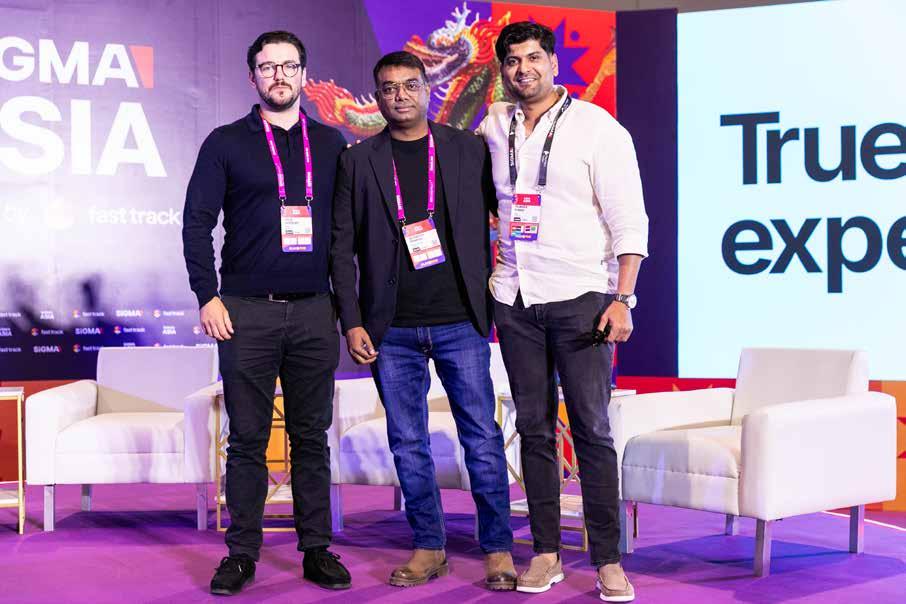
21. The Invisible Casino: Building Trust, Profit & Player Joy in the Cloud-First Era
Patrick Camilleri introduced the concept of the “invisible casino”— cloud-powered infrastructure that delivers seamless gaming experiences behind the scenes. Horizontal cloud scaling ensures real-time adaptability while reducing costs. While players don’t see backend performance, they feel its effects in responsiveness and uptime. Operators are urged to view cloud spend as a business metric tied to revenue outcomes. Robust cybersecurity and foundational security practices remain critical. Compliance, fraud detection, and innovation are all enabled by agile cloud systems. The rise of FinOps adds financial discipline to tech operations. The message is clear: the future of iGaming lies in invisible, scalable infrastructure that supports trust, speed, and innovation.

22. Winning the SEO Game Ahead of the Launch
Kirk Cassandra Roldan delivered high-impact SEO strategies tailored to AI gaming. From keyword compliance to image optimization, he showed how new platforms can scale traffic rapidly—even in regulated and competitive spaces. He emphasized building topical authority through structured content hubs, fast site performance, and visual SEO. Brand visibility and trust can be enhanced through digital PR, influencer partnerships, and ethical link-building. Strategic use of aged domains, link insertions, and tiered strategies offer powerful boosts to visibility. The session concluded that advanced, regulatory-aware SEO is a cost-effective, scalable growth engine in the AI gaming ecosystem.
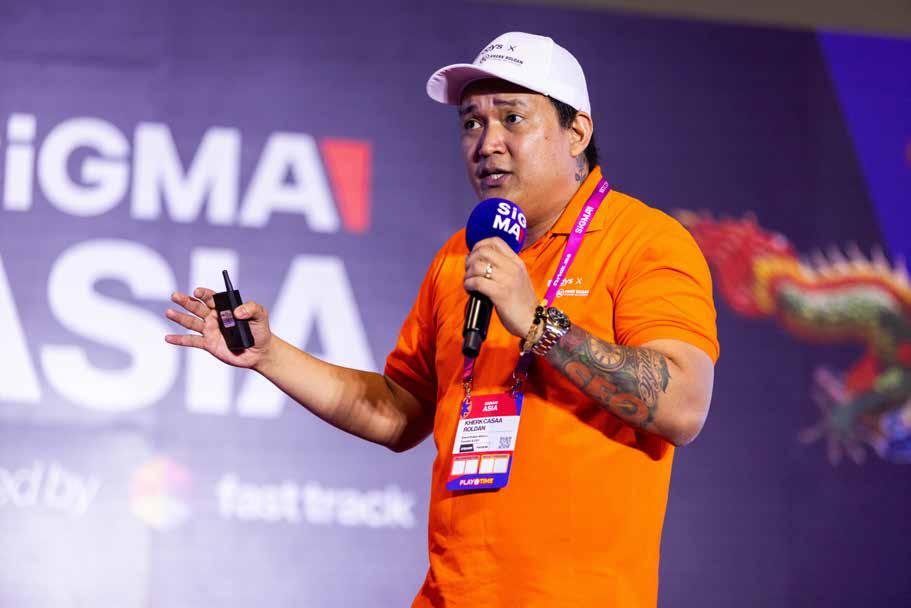
23. Subtlety in Marketing: Japan’s Response to Online Gambling Promotion
Joji Curiel’s keynote highlighted Japan’s complex regulatory landscape surrounding online gambling promotion. Despite its illegality, over 3 million people in Japan have engaged in online gambling, many unaware of its illegality due to influencer marketing and social media exposure. While enforcement focuses on promoters and celebrities rather than offshore operators, regulatory tightening is underway. New laws may soon criminalise facilitation of access to illegal platforms, escalating risks for marketers and affiliates. Operators are adapting with indirect strategies such as anonymous influencers and keyword-targeted SEO, but Japan’s market demands cultural sensitivity, stealth, and legal fluency to succeed.
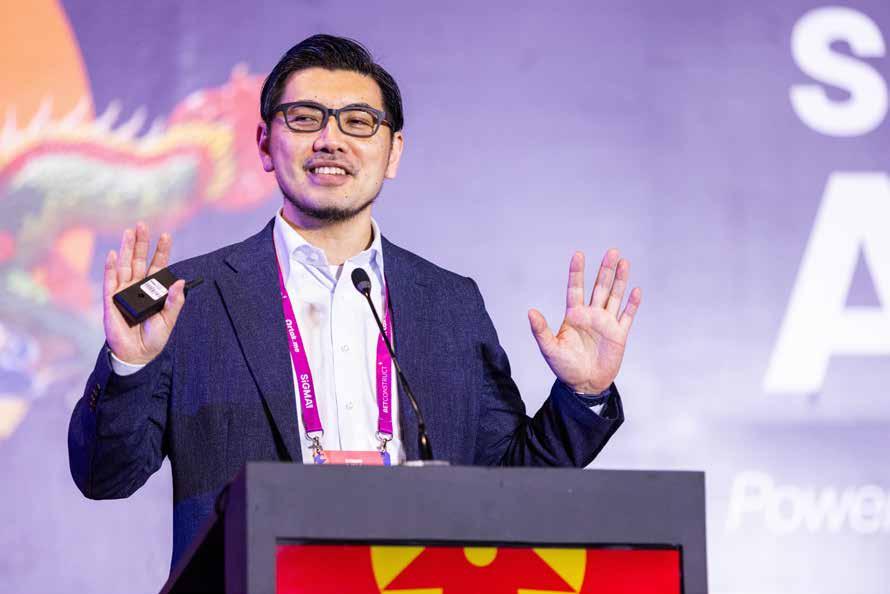
24. Big Data & Localisation: Crafting Hyper-Relevant Experiences
This session emphasized that success in Southeast Asia’s gaming space hinges on localisation, data-driven engagement, and adaptability. In the Philippines, behavioural analytics inform hyper-local campaigns, while operators prioritise platform speed and cultural relevance to retain users. Personalisation is progressing, but still lags behind its promise. Agile marketing strategies, paired with fallback plans for volatile environments, were identified as critical. The session stressed the importance of owned data, cross-functional tools, and infrastructure excellence in building responsive, resilient platforms that can thrive in diverse regional markets.
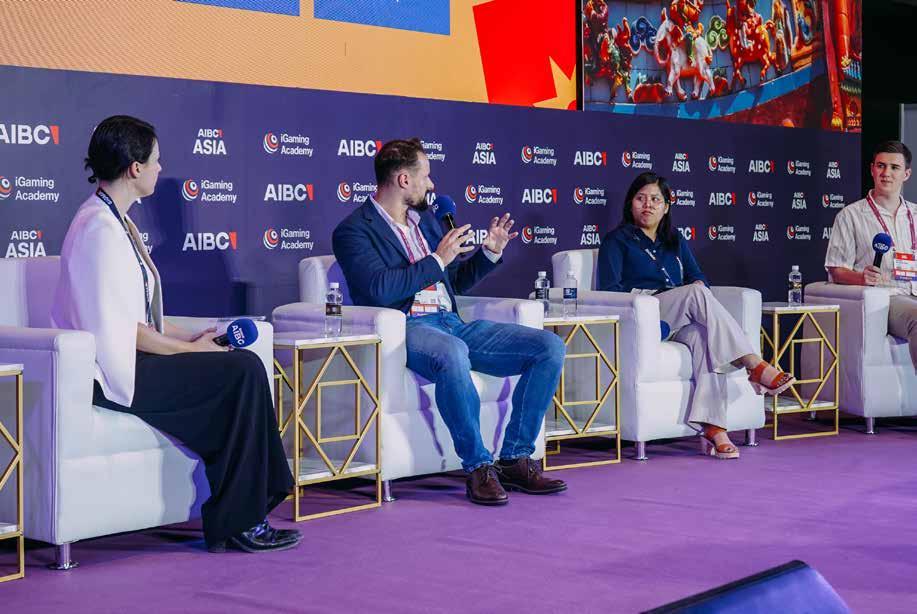
25. The New Science (and Soul) Behind Player Engagement
Jasper Vin Chen’s closing keynote urged the gaming industry to shift focus from attention metrics to emotional resonance. Engagement should be earned through cultural relevance, emotional validation, and integrated digital-physical experiences. DigiPlus’ “Omni-feel” strategy blends responsible gaming, user empathy, and localised storytelling to create trust and daily ritual for users. With campaigns designed like side quests, engagement becomes immersive rather than disruptive. Emotion is the new currency, and the future of player retention lies in platforms that build meaningful connections, reflect local values, and evolve through iteration and empathy.

26. Women in Gaming Across Asia: Talent, Trends
& Territories to Watch
This high-impact panel spotlighted women’s growing leadership in the Asian gaming sector. From senior roles in design and marketing to driving regional expansions, women are transforming game development with empathy and cultural intelligence. Nearly 40% of gamers in Asia are women, yet gender gaps remain in executive positions. Emerging markets like India and the Philippines show increasing female participation, highlighting a business imperative for inclusivity. With AI and mobile gaming on the rise, women’s creative and behavioural insights are pivotal to innovation. The panel closed with a call to action: empower women to lead, innovate, and shape the industry’s future.

III. AIBC ASIA STAGE INSIGHTS
The AIBC Stage at SiGMA Asia 2025 launched with a bold vision of the future, placing artificial intelligence, blockchain, and frontier technologies at the heart of global digital transformation. Opening keynotes and panels tackled the high-stakes convergence of tech innovation and regulation, spotlighting Asia as a proving ground for responsible AI adoption, ethical data practices, and decentralised ecosystems. Industry leaders and visionaries unpacked the implications of AI-driven gaming, personalised digital economies, and token-based infrastructures, while calling for greater interoperability, user protection, and regulatory clarity. Across discussions on cloud infrastructure, fraud prevention, influencer ecosystems, and metaverse reinvention, a clear narrative emerged: Asia is not just adopting advanced technologies—it is shaping how they will be governed, scaled, and experienced worldwide. With a focus on inclusion, localisation, and trust, the AIBC Stage laid the groundwork for a tech-forward, people-centric digital future—led by innovation, anchored in ethics, and powered by collaboration.

AIBC Section 1
Artificial Intelligence: Innovation for Business
1. Quantum and Blockchain
Convergence
In a gripping session, Kapil Dhiman, CEO of Quranium, issued a stark warning about the existential threat quantum computing poses to blockchain security. Drawing attention to BlackRock’s ETF filings, which cite quantum computing as Bitcoin’s greatest risk, he emphasised the vulnerability of existing encryption methods like ECDSA, developed over 40 years ago. Kapil explained how quantum computers, with their exponential computing power, could reverse-engineer public keys to access private wallets. The solution lies in post-quantum cryptography, which removes the reliance on mathematical complexity, and is already being advanced by organisations like NIST. “All the existing blockchains,” he stated, “will have no option but to switch to post-quantum cryptography.” His message was a clarion call for urgency: the cryptographic future is arriving faster than expected, and only those who adapt will survive.
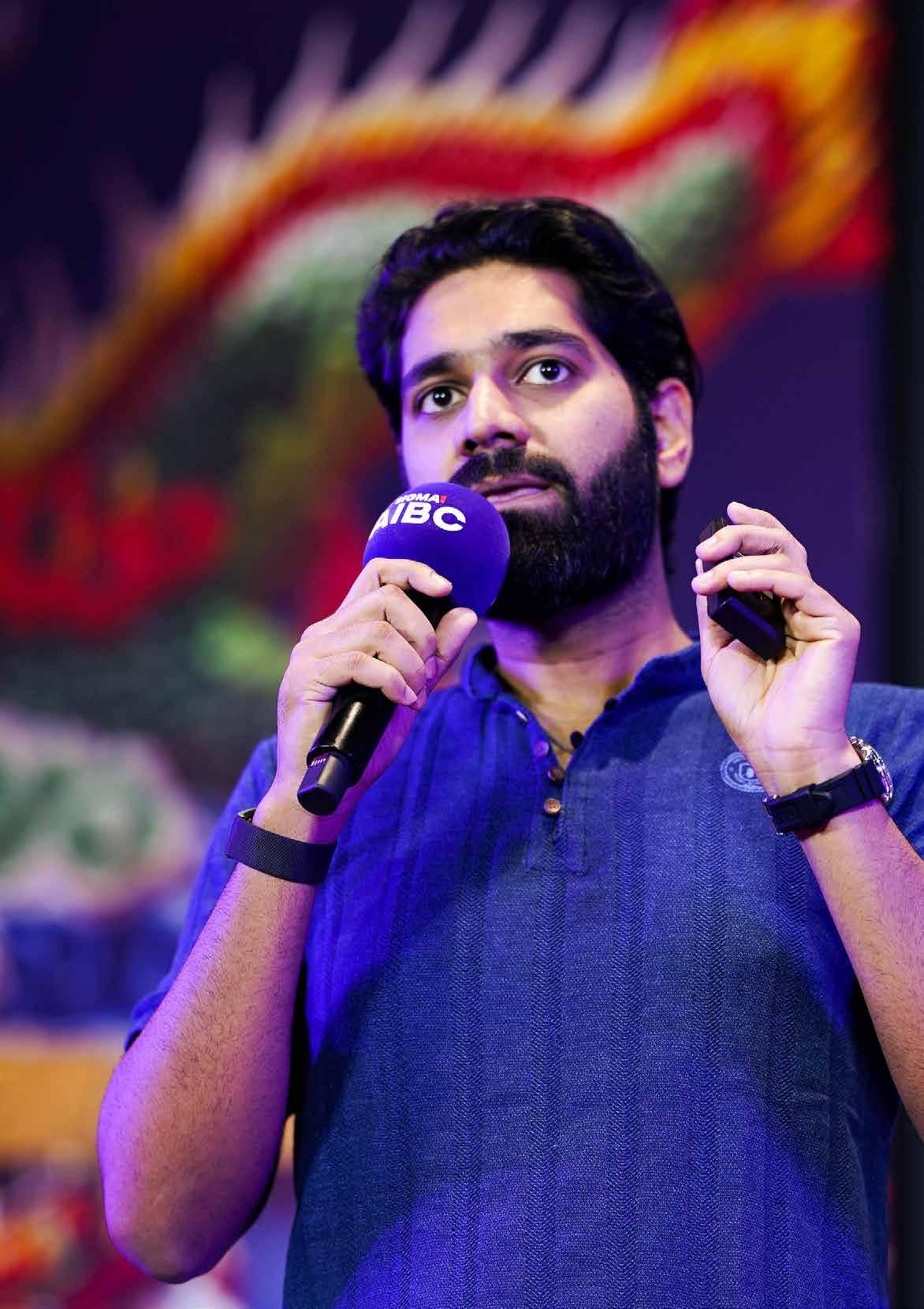
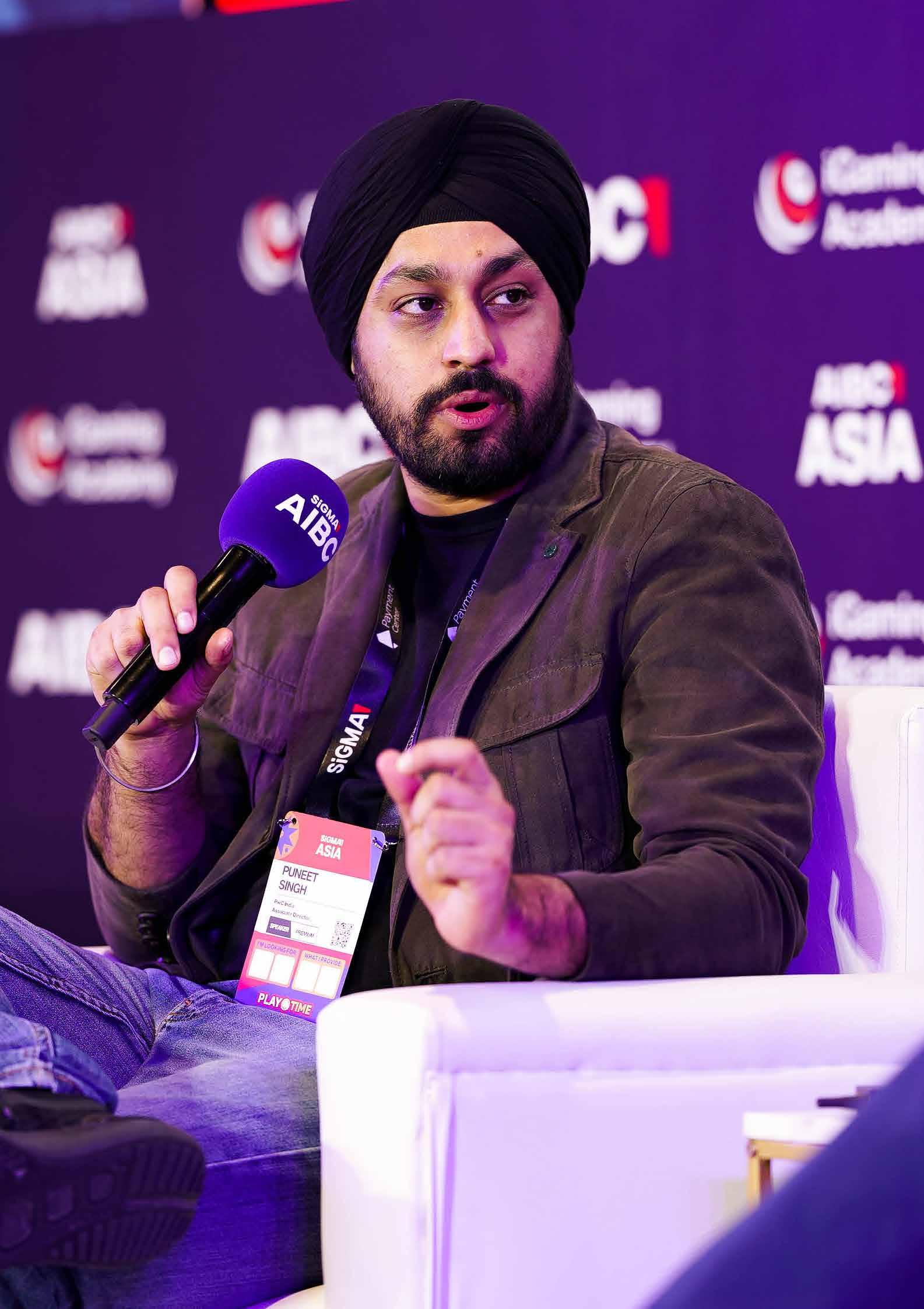
2. Why AI Is the Ultimate Mirror of Human Ambition
In a lively dialogue, Kapil Dhiman and Puneet Singh dove deeper into AI hallucinations, foundational models, and the convergence of AI and quantum threats. Puneet demystified hallucinations in LLMs as pattern mismatches during probabilistic predictions, while Kapil warned that even basic AI infrastructure is being re-engineered under quantum pressure. They both emphasised how AI is transforming creative industries and operational systems, especially in gaming, where GPT models are now building hundreds of games. The panel made a case for adaptability: “If AI cuts your eight-hour job to four and you don’t adapt,” Kapil warned, “that’s when your job becomes redundant.” Efficiency, not fear, should guide how we embrace this transformation.
3. AI & Quantum – Fireside Chat
In a lively dialogue, Kapil Dhiman and Puneet Singh dove deeper into AI hallucinations, foundational models, and the convergence of AI and quantum threats. Puneet demystified hallucinations in LLMs as pattern mismatches during probabilistic predictions, while Kapil warned that even basic AI infrastructure is being re-engineered under quantum pressure. They both emphasised how AI is transforming creative industries and operational systems, especially in gaming, where GPT models are now building hundreds of games. The panel made a case for adaptability: “If AI cuts your eight-hour job to four and you don’t adapt,” Kapil warned, “that’s when your job becomes redundant.” Efficiency, not fear, should guide how we embrace this transformation.

AIBC Section 2
Digital Assets and Crypto Payments
4. Crypto Narratives 2025 –AI, Memecoins or New ICOs?
A dynamic panel featuring Torben Friis, Anton Golub, Amira Alawi, and Jose Mendoza unpacked the evolving narratives in crypto, with AI emerging as the dominant storyline. Anton illustrated the rise of AI-powered agents capable of managing portfolios, tweeting, and executing trades, with tokenised models like Virtual showing early traction. Amira highlighted how AI is already embedded in customer service, risk engines, and marketing within exchanges. The panel discussed challenges of liquidity, overhyped memecoins, and the role of AI in simplifying DeFi’s complex user journeys. “Copy trading agents,” Jose noted, “can mirror your grandma or an aggressive trader. It’s all about accessibility.” Ultimately, utility, not hype, was named as the key to long-term success.
5. Stablecoins – Adoption, Infrastructure &
Regulation
This session explored how stablecoins are transforming payments across sectors—from gaming floors to remittance corridors. Jonathan Low argued that stablecoins are a pragmatic bridge from failing fiat systems to more inclusive finance. Nick Hill described real-world use in casinos, where stable tokens create unified digital wallets across physical and online platforms while enabling full KYC/AML compliance. Wei Zhou revealed that Coins.ph, in partnership with Circle and BSP, is piloting a peso-backed stablecoin—the first licensed local currency coin in the Philippines. The panel agreed that the future includes yieldbearing and localised stablecoins. “We’re not replacing cash,” Wei said, “we’re building better rails for it.”
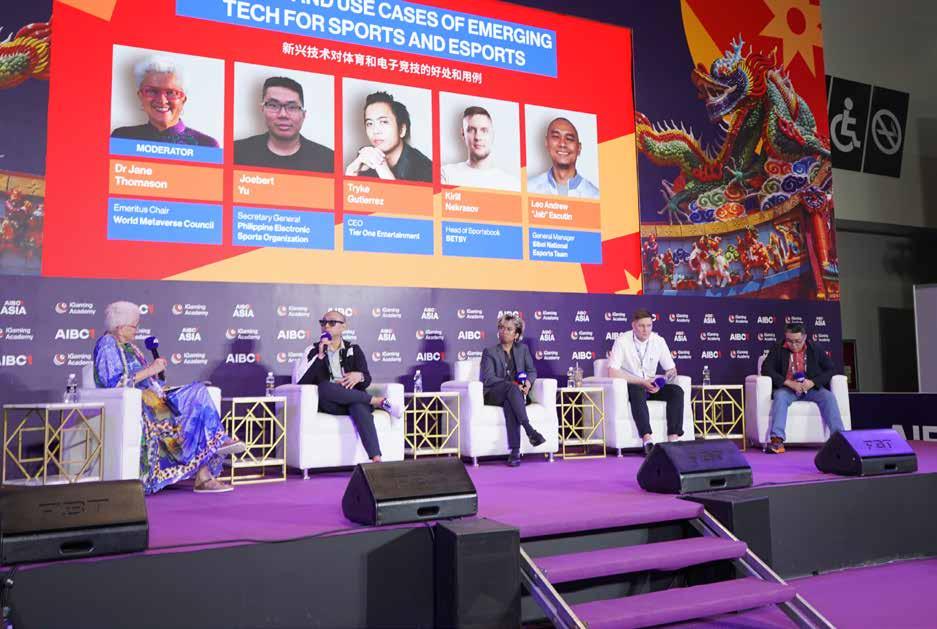
6. How Players and Operators Can Lose & Recover Stolen Crypto
This pragmatic panel shed light on crypto fraud in iGaming and the growing importance of AI in mitigating it. Dmitrii Sandzhiev shared that most thefts stem from social engineering, often by insiders. Joe Zhou revealed that over 90% of victims knew their attackers personally. Both emphasised swift action: once funds are moved, chances of recovery plummet. AI now enables real-time pattern detection and anomaly alerts, though user awareness remains crucial. “We can send warnings,” Joe explained, “but most users ignore them.” The panel advocated for a culture of vigilance and rapid response, supported by AI-driven monitoring tools and proactive partnerships with exchanges and law enforcement.

Digital Economy: Blockchain and Regulation
7. Philippines Blockchain Ecosystem Map
Led by members of the Blockchain Council of the Philippines, this panel painted a vibrant picture of the country’s emerging Web3 ecosystem. With new regulations from the SEC allowing staking, ICOs, and token offerings under the C.A.S.P. framework, the Philippines is poised for a breakout moment. Speakers emphasised the importance of data sovereignty, local infrastructure, and inclusive education. “We are entering our ‘tech teenage years,’” said Donald Lim. From peso-backed stablecoins to blockchain-based government budgets, the nation is building grassroots and institutional support for digital transformation. “Blockchain is not just for crypto,” said Mark Gorriceta, “it’s infrastructure for national growth.”
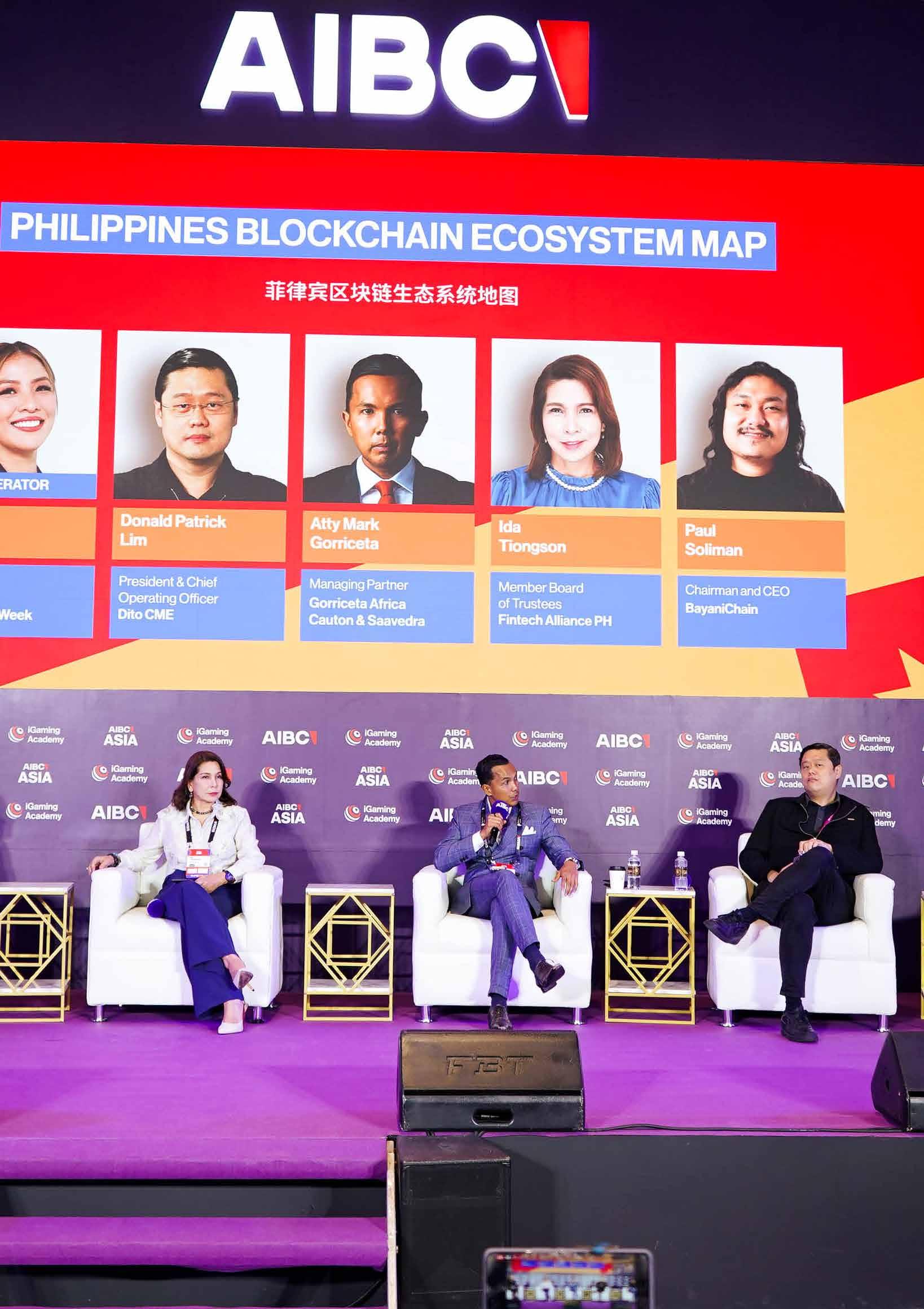
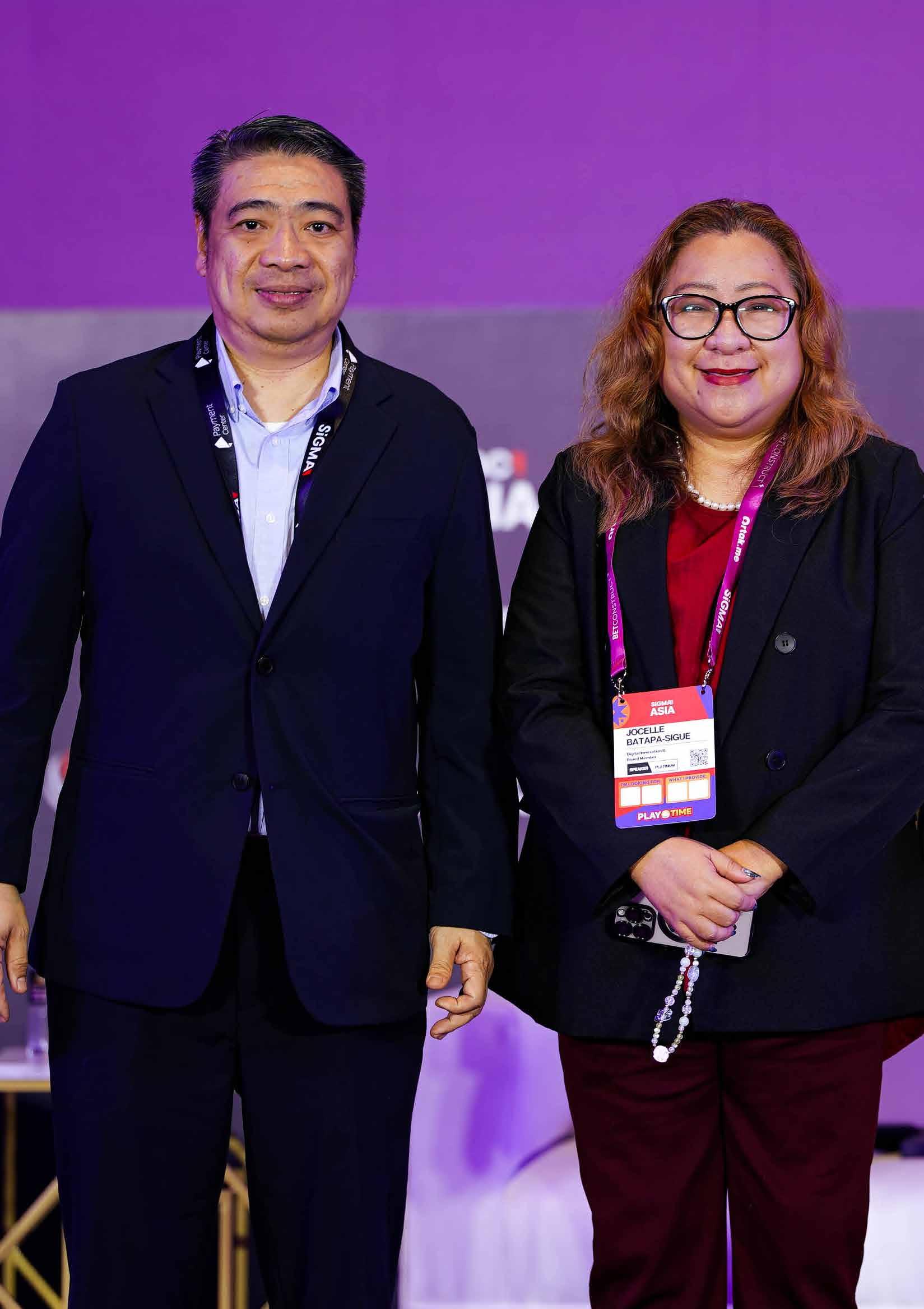

9. Beyond the Hype – KOL Secrets to Thriving in Tech, Gaming & Web3
In this energetic panel, leading Filipino KOLs like Gerry Go, Rommel Celestino, and Giu Comia pulled back the curtain on influencer marketing in Web3. They rejected the “shill culture” in favour of education, integrity, and long-term community building. “We’re not salespeople—we’re educators,” said Gerry. They warned about scams, unethical promotions, and the dangers of regulatory overreach in silencing educational voices. Instead, they called for brands to treat KOLs as value creators, not exit liquidity tools. “The only 100x you should aim for,” Giu remarked, “is your own growth.” Their message: influence is not about reach, it’s about responsibility.
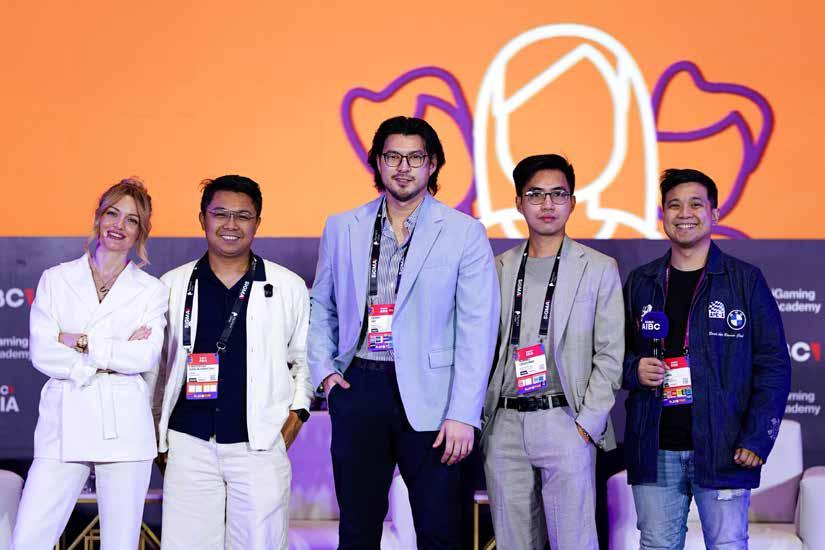
AIBC Section 5
Workshop by Dr Jane Thomason
10.
The Future of Gaming –
What’s Next?
Dr. Jane Thomason’s keynote painted a bold vision of gaming as the foundation for future economies, cultures, and systems of governance. She highlighted Asia’s dominance—with 62 of the top 100 gaming companies and 3.5 billion players—and the rise of regional leaders like the Philippines and Saudi Arabia. Gaming, she argued, is rapidly evolving from entertainment into infrastructure, powered by Web3 technologies that democratize ownership and create tokenized economies governed by DAOs. With AI enabling emotionally adaptive storylines, and braincomputer interfaces promising mind-controlled interaction, the boundaries between the digital and physical worlds are dissolving. Dr. Thomason emphasized that gaming is already transforming healthcare, education, and ageing, offering therapeutic tools and immersive learning environments. As digital identity, labor, and property shift into virtual realms, she called for urgent educational reform to equip youth for a gamified, decentralized future. Her message was clear: gaming is not just a game—it is the platform on which the next industrial revolution will be built.
Sports, eSports and Sportsbooks
11. Fireside Chat with Oscar Brodkin (Sportradar) and Jared “The Daredevil” Dillinger
In a compelling fireside chat, Oscar Brodkin of Sportradar and former pro athlete Jared Dillinger examined the future of sports through the lens of data, digital engagement, and athlete empowerment. The session explored the evolving tension between instinct and analytics in elite performance, highlighting how even intangible traits like “clutch” moments are now being quantified. A key issue raised was athlete data ownership—why players generating valuable performance data aren’t profiting from it directly. Ideas such as athlete dashboards to track fan and betting interaction signal a shift toward athlete-driven monetization. Integrity in sports betting remains paramount, with Sportradar monitoring over 800,000 matches annually and flagging suspicious activity to preserve trust. The convergence of content, community, and betting was underscored by the rise of influencers shaping fan behavior. The session also noted the regional complexity of deploying sports tech across Asia, with countries like the Philippines and UAE emerging as digital leaders. Looking ahead, hyper-personalised, AI-driven betting platforms promise tailored fan experiences—but only if designed with subtlety and user value at the core. The discussion framed a future where athlete rights, data ethics, and immersive fan engagement redefine global sports.


12. Benefits and Use Cases of Emerging Tech for Sports and eSports –
Key Insights
This dynamic panel explored how AI, Web3, and immersive media are transforming the global and Southeast Asian esports landscape—reshaping performance, betting, fan engagement, and digital identity. In the Philippines, esports is emerging as both a cultural movement and an economic force, with institutional recognition and national pride propelling growth. AI is enabling precise player analytics and personalised betting systems, while fan content is shifting toward short-form, emotionally driven storytelling. Teams like Blacklist International are cultivating loyalty through K-pop-inspired community models, blending culture with commerce. Web3 technologies are laying the groundwork for interoperable identities and persistent digital ownership across games. Despite challenges such as limited capital and mixed sentiment toward NFTs, esports is rapidly gaining legitimacy, now featured in the SEA Games and heading toward Olympic inclusion. By 2030, panelists envision a fully integrated ecosystem where esports rivals traditional sports in relevance—powered by AI, shaped by fan culture, and driven by inclusive digital infrastructure. “Esports is not just entertainment—it’s an opportunity for economic development, digital inclusion, and technological leadership in emerging markets like the Philippines.” (Dr Jane Thomason)
AIBC Section 1
Workshop by Nicholas Levenstein
13. “One Up On Wall Street”: Would You Invest in You? Key Insights
In a compelling workshop at AIBC Asia 2025, Nicholas Levenstein urged founders to think like investors—prioritizing simplicity, recurring revenue, and niche clarity over flashy ambition. Drawing on lessons from Peter Lynch’s One Up on Wall Street and his own experience with a Bitcoin derivatives hedge fund, he emphasized that real traction—not just passion—is what attracts capital. Founders must demonstrate progress through customer engagement, revenue, or clear market validation. AI, while powerful, must be applied thoughtfully to solve real business problems, not serve as a gimmick. Sustainable growth, rather than blind hustle, is key to long-term success. Investor-ready businesses today are founder-led, tech-enabled, and capital-efficient—lean operations with disciplined leadership that can weather volatility and deliver value over time.

AIBC Section 2
Gaming & Tokenisation
14. Fireside Chat with SANDBOX: Stage of Gaming Development and AI Implementation – Key Insights
At AIBC Asia 2025, George Wong of The Sandbox and serial founder Joe Josue underscored that the future of gaming lies in seamless, engaging experiences—not in tokenomics or technological jargon. Wong stressed that Web3 gaming must shed its focus on financial incentives and instead prioritize fun, story-driven, and frictionless gameplay to win mass adoption. AI is a major catalyst, empowering no-code creators to build complex worlds rapidly, dramatically lowering the entry barrier for game development. The panel predicted that AIpowered NPCs will redefine immersion by enabling lifelike, adaptive characters that evolve with player input. Additionally, attention is emerging as the new digital currency, with platforms shifting from monetizing labor to valuing user presence and engagement. Ultimately, success in the next phase of gaming will come when players aren’t drawn by “Web3,” but by compelling content, where blockchain and AI power the experience invisibly in the background.
15. Gaming Guilds as Growth Engines: Community Building Lessons from the Philippines –
Key Insights
The AIBC Asia 2025 panel on “Gaming Guilds as Growth Engines” showcased how YGG Philippines is redefining the role of guilds in the Web3 era—transitioning from simple playto-earn models to dynamic, community-driven ecosystems rooted in education and empowerment. No longer reliant on token rewards, guilds now serve as digital learning hubs that upskill members in areas like game design, content creation, moderation, and testing—building pathways to real economic participation. Educational initiatives such as Metaversity and the Metaverse Filipino Worker Caravan reflect a commitment to inclusivity, breaking down barriers for underserved populations to join the digital economy. Central to this success is the cultivation of strong community bonds, mentorship, and a sense of purpose—making guilds more than just online groups, but decentralized support systems for lifelong learning. Looking ahead, specialised guilds tailored to domains like AI, creative tech, or education could emerge as Web3-native alternatives to traditional career development, positioning gaming communities as engines for digital workforce transformation across Southeast Asia and beyond.
Investors and Startups
16. Tech Treasure Hunt: Uncovering Goldmines in Startup Innovations – Key Insights
The “Tech Treasure Hunt” panel at AIBC Asia 2025 offered a candid look at how the startup funding landscape is evolving beyond the speculative boom of 2021. Investors are now rejecting hype-driven tokenomics in favor of startups grounded in real utility, product-market fit, and long-term value. Panelists emphasized that equity investments are regaining traction, and tokens must serve functional purposes—not just financial speculation. Founders are being urged to move beyond outdated fundraising models and flashy user acquisition tactics in favor of authentic community engagement and retention. The conversation also highlighted the rising appeal of stablecoins and real-world blockchain applications, especially those with regulatory traction and practical demand. Grassroots innovation is thriving in the Philippines, where initiatives like DEVCON PH are empowering regional talent through education, bootcamps, and community building. The most scalable and impactful solutions, the panel concluded, come from local founders solving real problems— grounded in their communities, but with the potential to scale globally through Web3 tools and inclusive ecosystems.

17. Investing Early in the Philippines Tech Talent – Key Insights
In this session, Dom De Leon, Executive Director of DEVCON Philippines, shared how DEVCON has become a national force in inclusive tech education and regional innovation. Over 16 years, the organization has empowered thousands across 11 active chapters with free training in robotics, coding, smart contracts, and digital entrepreneurship—especially in underserved areas like Bukidnon and Bohol. By decentralizing access to startup ecosystems and maintaining a tech-agnostic, mission-first philosophy, DEVCON enables local talent to engage with emerging technologies like Web3, AI, and fintech without being driven by hype cycles. The model champions pragmatic funding—encouraging founders to seize grant opportunities while remaining focused on local impact. Crucially, DEVCON supports the transformation of hyperlocal challenges into globally scalable solutions, leveraging both the English fluency and digital fluency of Filipino developers to connect with international ecosystems. This approach positions the Philippines as a powerful grassroots engine for tech innovation in the global digital economy.
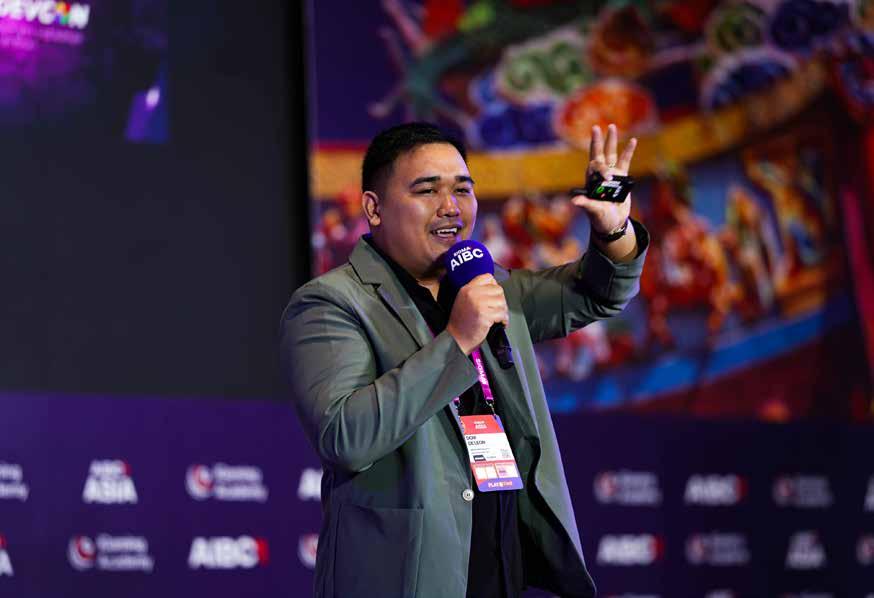
18. Successful AI-driven Startups –Insights
from founders and investors on scaling, securing funding, and overcoming technical hurdles. Key Insights
This panel unpacked the real ingredients for building successful AI-driven startups in today’s maturing tech landscape. Investors are now seeking founders with the potential to deliver 100x returns through originality, deep domain knowledge, and defensible advantages—not just bold ideas or buzzwords. Founders who demonstrate humility, adaptability, and a relentless focus on solving real problems stand out in a crowded space. The panel emphasized the dangers of ego, hype-driven growth, and tokencentric communities lacking real engagement. Instead, startups must prioritize authentic community-building, originality, and execution over trend-chasing. Grassroots innovation—particularly in emerging markets like the Philippines—is increasingly seen as a powerful force, fueled by local insights and strengthened by returning diaspora talent. Looking ahead, the panel noted that successful startups will need to navigate not only innovation but also evolving regulatory expectations and institutional investment frameworks. The ultimate message: sustainable AI startups are built on grit, user obsession, and strategic execution—not hype or capital alone.
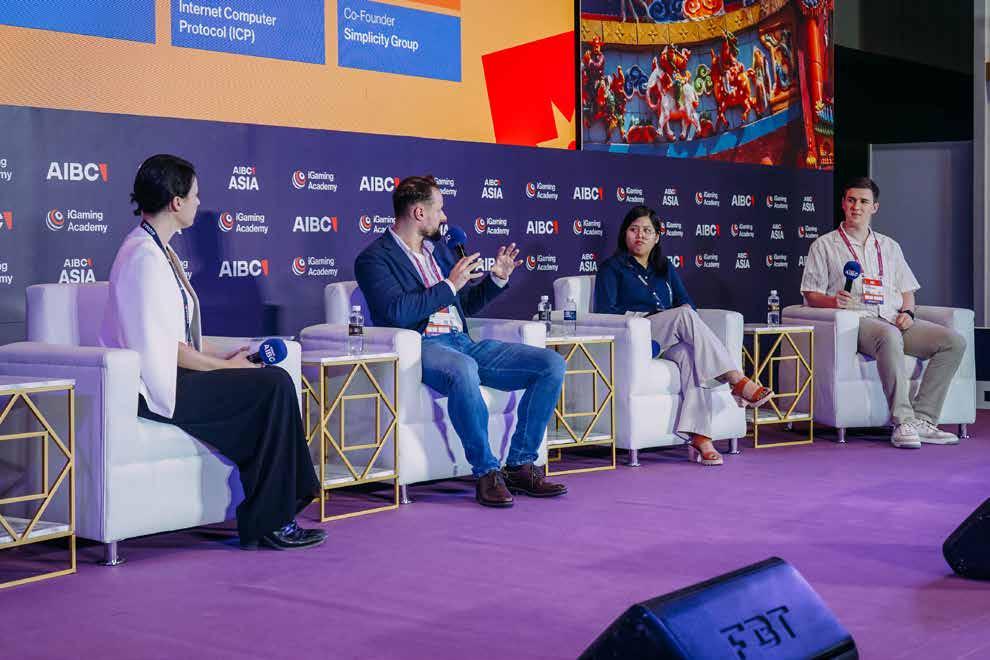
19. The VC reality check: 5 brutally honest lessons for Founders – Key Insights
In her keynote, Laura K. Inamedinova delivered a sharp and timely wake-up call to startup founders navigating the 2025 venture capital landscape. She made it clear that VCs are not there to support slow-growth businesses—they’re hunting for startups with 100x return potential and founders who deeply understand investor psychology. Chasing outdated trends or jumping into fundraising prematurely—without team strength, traction, or a validated product—is a fast track to rejection. Founders must master six core elements in their pitch, from market timing to team credibility, and shed ego in favor of coachability and iteration. VCs back grit, not hype. Success today demands humility, execution discipline, and a forwardlooking mindset that builds for tomorrow’s markets—not yesterday’s fads.

Courtesy of
WHY ARE SiGMA AIBC EVENTS NOT TO
BE MISSED?
Attending an AIBC SiGMA Event is the ultimate opportunity for anyone passionate about gaming, technology, and the future of innovation. In today’s fast-paced world, staying ahead of the curve is essential, and there’s no better way to immerse yourself in cuttingedge developments than by joining the brightest minds in the industry at an AIBC SiGMA event. These events bring together global leaders, entrepreneurs, regulators, and visionaries from across the gaming, technology, and blockchain sectors to discuss, debate, and showcase the most impactful trends and innovations shaping the future. Whether you’re an investor, developer, or enthusiast, the insights you’ll gain from this experience are unparalleled.
1. Access to Exclusive Knowledge & Insights:
At AIBC SiGMA, you are in the front row of game-changing presentations, panels, and keynote speeches that will give you exclusive access to the most current trends in gaming and technology. From the evolution of AI and blockchain to the rise of the metaverse and decentralised finance (DeFi), you’ll hear from thought leaders who are defining the next wave of digital transformation. These events aren’t just about what’s happening now but about what’s coming next.
2. Networking with Industry Leaders:
The AIBC SiGMA event attracts an elite group of industry professionals—entrepreneurs, innovators, investors, and regulators— creating the perfect environment for high-level networking. Building meaningful relationships with industry leaders can unlock new opportunities, partnerships, and collaborations. Whether you’re looking for a mentor, funding for your next project, or simply a way to expand your professional network, AIBC SiGMA offers unmatched access to the key players in the world of gaming and technology.
3. Immersive Experience in Gaming and Innovation:
What sets AIBC SiGMA apart is its immersive, hands-on experience. You will have the opportunity to interact directly with exhibitors showcasing the latest gaming technologies, blockchain solutions, AI-powered tools, and more. Explore interactive demos, participate in live discussions, and witness firsthand the technologies revolutionising industries. This level of immersion ensures that you understand the trends and can experience them in action.
4. Engage with Cutting-Edge Trends:
From AI and machine learning to augmented and virtual reality, blockchain, and beyond, AIBC SiGMA delves into the technologies that are changing the way we live, work, and play. Learn how AI is revolutionising gaming experiences, how blockchain is ensuring transparency and security, and how emerging technologies are reshaping user engagement and digital economies. Whether it’s discussing the future of esports, the integration of blockchain in gaming, or the rise of NFT-based gaming assets, the AIBC SiGMA event brings these trends into sharp focus.
5. Expert-Led Panels and Discussions:
At AIBC SiGMA, you’ll have access to a range of expertly curated panels and discussions led by some of the most prominent thought leaders in the world of gaming and technology. These sessions are designed to tackle the big questions, dive deep into emerging technologies, and offer diverse perspectives on the future of gaming, AI, and blockchain. Whether you’re looking to understand the implications of new regulatory frameworks, explore the rise of NFTs, or uncover the latest trends in game development, you’ll leave with a wealth of knowledge that can directly impact your work.
In conclusion, AIBC SiGMA Events are the premier destination for anyone looking to stay at the forefront of the gaming and technology industries. It’s more than just an event—it’s an experience that will deepen your understanding, broaden your network, and provide you with the tools to succeed in an increasingly digital world. Don’t miss the chance to gain unparalleled insights into the innovations that will define tomorrow.
We hope you enjoy “SiGMA AIBC Horizons: Pioneering the Future of Tech & Gaming. ASIA 2025”


